"Internetizing" the Blockchain & Trusting It

IoT devices - Pexels
The internet created a "global" village because its solution cut across everywhere, digitally. It allowed information to be transferred across and between all digital industries online ranging from finances, to businesses, down to our cherished social media. The gap between these several digital locations were bridged and information type was not a restriction as the internet provided tools required to ensure compatibility.
The Blockchain stepped up the solution of the internet. Raising it from simply being a connection of devices where just "things" could be transferred, hence the nickname, "internet of Things", to a network where value could also be transferred. The solution has earned the blockchain the alias, "Internet of Value". Fundamentally the blockchain solved the problem of not being able to transfer value digitally by creating a distributed or rather decentralized ledger, where all activities (transactions) are recorded and this eliminated the problem of double-spending and centralization associated with the internet.
Problems Associated with the Blockchain
Although the solution presented by the blockchain enabled direct peer-to-peer value interactions without any intermediaries, the amount of transactions were still extremely poor and it grossly hampered its mass adoption. Traditional payment system Visa, can handle up to 24,000 transactions per second and public blockchains such as Bitcoin and Ethereum can handle only about 7 transactions per second. Clearly yet to be a commercial-grade network.
In addition to the crawling transactions speed, blockchain applications on different platforms, markets or industries are isolated. For example, Ripple which is a payment solution is disconnected from say Steem which by blockchain power, injects value into our online activities. The value and economic system of these solutions are utterly closed to each other. This fragmented blockchain space hinders value flow as there are no channels for it. Some other blockchain bottlenecks that are yet to be smashed include; high energy consumption of network nodes and difficulty in implementation of solutions.
As regards high energy consumption, sophisticated computers with minimum network requirements are required to record transactions into the distributed ledger. In blockchain networks that uses Proof of Work (PoW) consensus algorithm, all nodes battle to get the results from the value transactions first, in order to get rewarded when other nodes all nodes come to a consensus with that same result. These algorithms are energy zapping, and a whole lot of computers which are nodes waste this energy in attempt to be who mines the transaction block. A new study estimates that the Bitcoin network consumes a ludicrous 2.6GW of power - almost the same amount of power the entire ireland consumes😱 and it is predicted to rise as high as 7.7GW at the end of 2018.
As you would expect, algorithms which are power zapping, also require a high mental strength to create and implement. Building and operating these applications have a high technical requirement which only few users meet. This slows down the rapid development of the blockchain applications and heightens the costs. In short, blockchain makes interaction with it so expensive that it retards its integration acceleration.
Above all other bottlenecks is the bottleneck of true decentralization. The blockchain technology still lacks users' trust today because it hasn't fully convinced its users of its decentralization. Most miners of public blockchain networks are found in china. This has created some doubts and questions in users' minds as to whether the blockchain technology is truly decentralized or just a government scam.😂 Some even say that it's controlled by the chinese government😅😂. You won't blame them as 51% attacks have been experienced before.
You might ask, now that these bottlenecks have been outlined, Is there any chance that a sledgehammer will fall on them soon? Can the blockchain be made more trustworthy and more interconnected?
Well, I'd let you be the Judge of that, as I present Bumo - The next-generation commercial-grade public blockchain, to you.
Introducing Bumo
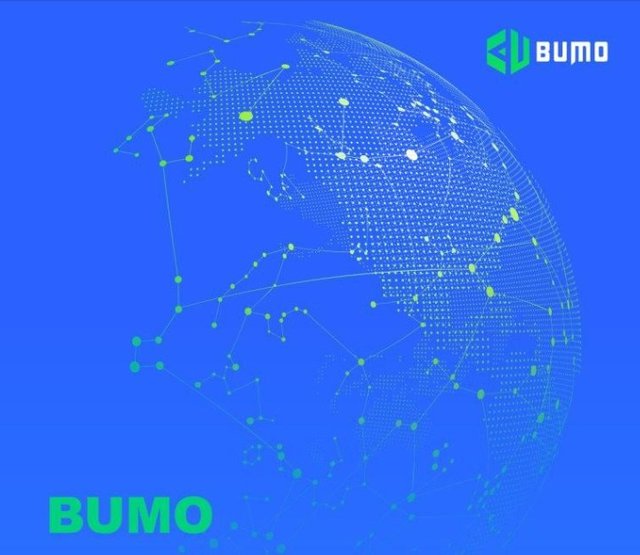
The Bumo project is aimed at building a network trusted by everyone everywhere for scalable digital value transfer and asset circulation even across a wide range or industries. It breaks open the blocked channel that hindered the liquidity of digital assets by provided the technical skeleton required. The Bumo technical support also caters for the needs of assets tokenization. It achieves its trust by enabling all smart devices to connect to its network and join in its maintenance and regulation. In other words, it sets a firm foundation for value circulation, by establishing a more true decentralization by connecting all smart smart devices including phones, laptop, camera, printers, TVs etcetera to its network.
So what is Bumo?
BUMO is a next-generation commercial-grade public Blockchain for ubiquitous and trusted value transfer, which is aimed to build a decentralized application ecosystem featured with extensive digital trust, free-flowing value and public-sharing apps.
That is, Bumo creates a free value-flow network bound to be trusted because of its true decentralization achieved via its extensive smart devices connection and uses it to forge an ecosystem for creation dapps which interacts with real world assets.
Bumo Elements
Bumo broadly comprises of two elements.
• The ubiquitous trust network &
• The trustable value circulation system.
The Ubiquitous Trust Network
The network consists of smart devices (called nodes) as have been aforementioned and any device can join and participate in the maintenance of the network, application development and value transfer. There are however three kinds of nodes. Regular nodes, Candidate nodes and Validator nodes. All regular nodes can apply to become candidate nodes from which validator nodes are chosen either by an election or lottery mechanism. Validator nodes are responsible for network accounting and resource management.
This node structure intelligently reduces the amount of energy consumed by the network compared to all other public blockchains, because although Bumo network of nodes will be very robust, only selected nodes will participate in validating transactions hence, saving power.
Consensus Algorithm:
Bumo births a new algorithm, BU Firework which is also called "DPoS+PBFT". Different from the traditional Proof of Stake (PoS) and Public Byzantine Fault Tolerance (PBFT), BU firework has a higher transactions throuhput, - an estimated 10,000 tps - scalability and security.
The consensus algorithm is responsible for selecting validator nodes from the candidate nodes, via special encrypted lottery algorithms and node priority. The validator nodes do the consensus validation of blocks received. The algorithm also have punish mechanisms for malicious nodes on the network.
Network Incentives: Validator nodes sacrifice their storage and processing resources for the blockchain network and are rewarded by the network fees, also referred to as "Gas". The fees vary depending on the transaction types which determines the storage and computing resources consumed. The Gas is measured in BU-Token (ticker symbol, BU) which is the built-in native digital token of Bumo. The incentives are determined by a Gas allocation mechanism which can be adjusted by the community through a Gas adjustment algorithm.
Smart Contracts: BuContract is the smart contract technology of Bumo which executes in BuVM (Bu Virtual Machine) which is the execution environment of Bumo Smart contracts. BuContract accelerates the rapid development, adoption and integration of dApps by bringing smart contract development to ordinary developers. BuContract does this by allowing smart contract development in Javascript -one of the most popular programming languages in the world. Devs need not learn smart contracts building languages like solidity to commence development. Also, BuVM will quickly support C++, python and other languages with the aid of WebAssembly technology. This will further increase Dev-friendliness of Bumo, therefore lesser cost of promotion and more product roll outs built on the network.
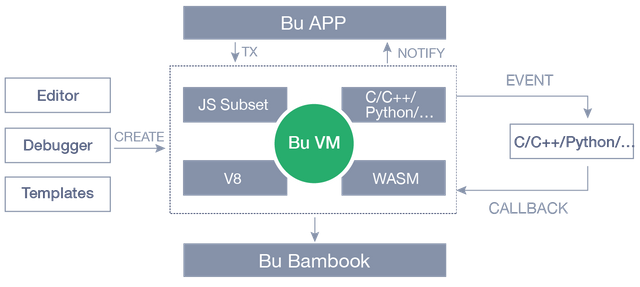
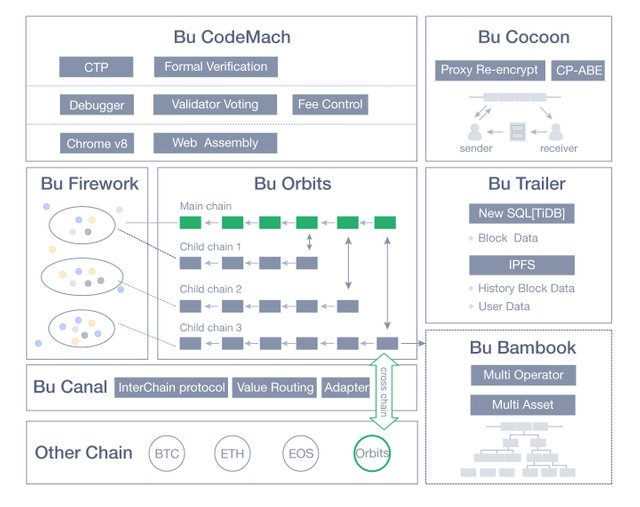
Cross-chain Compatibility: Bumo possesses two special but similar algorithms in its architecture which makes interchain connectivity possible. Yes! I mean having two public blockchains like Bitcoin and Ethereum interacting with each other. These architectures are Isomeric Interchains (Bu Canal and Isomorphic Interchains (Bu Orbits). Bu Orbits improves consensus efficiency by its main chain and child chain architecture allowing for differentiated storage and operations. Bu Canal is all about establishing communication between blockchains, enabling cross-chain interconnection.They are likened to the routers of the internet. The importance of the functions of both these elements is primarily **free flow of value in the "blockchain internet".
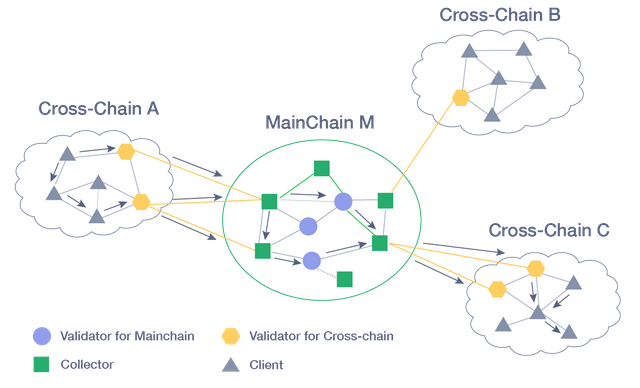
Trustable Value Circulation System.
Prior to Bumo, digital assets circulation and transfer were choked. It required the mediation of a central authority which monopolistically determined how things would go in the network. Blockchain technology trounced this and allowed for real P2P value interactions without any intermediaries. Bumo builds on this by providing a trustable service architecture which is capable of handling all kinds of business transactions, down to atomic ones at high transactions speed, high transactions throughput and low transactions cost.
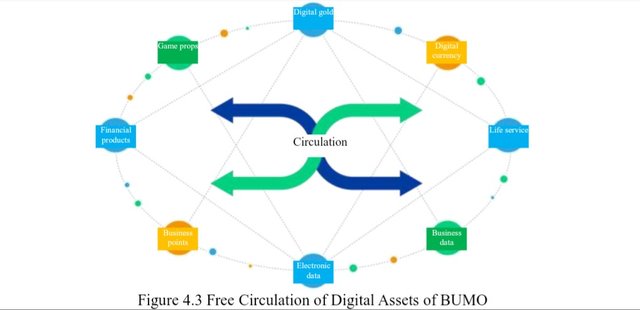
The large scale network of virtually all IoT devices which will steadily grow, not only guarantees true ownership of assets on the blockchain, Bumo ensures free flow of value via it's interconnectivity between chains. This creates more liquid digital assets which are more vital and more valuable to businesses.
Connecting all things via Bumo's digital book creates an Internet of Things value chain, where smart devices can interact and compete between one another independently. Bumo redefines value transfer between IoT devices. By decentralizing it and lessening the cost of value transfer. Bumo integrates the Internet of Things and the blockchain technology, not just to heal the Internet of it's technical disease of not being able to transfer value without intermediaries but also scales its it's compatibility of value transfer to involve all types of mainstream intelligent devices and extends the network tentacles to all corners of Social life.
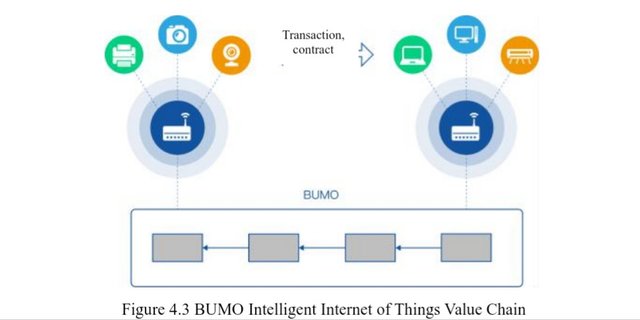
Speaking of compatibility Bumo establishes a protocol named Bumo Assets Tokenization Protocol (BATP) which makes any token token issued on Bumo compatible across several applications. Bumo has two Tokenization agreements. The lightweight Account-based tokenization which does not require any intelligent contract creation and the Contract-based tokenization. See details in Bumo Whitepaper.
Use Case - A More Intelligent Billing
Bumo creates a value network for all IoT devices, hence it is not difficult to envision billings based on the usage. Connected to a value network such as Bumo, a household with a television set, washing machine and satellite, can be connected to a single wallet from which billings are automatically charged. By this, value smart devices can be built to achieve these devices being economical valuewise and reduce how we've wasted resources via these devices hitherto.
Based on this ubiquitous trust network as well, gas stations can be sited in remote locations unmanned, all buyers need do is prove identity and enter a wallet from which digital assets will be charged. The gas pump does this intelligently based on how much fuel is discharged through its nozzle. This reduces cost of management, ensures a more fair economy and allows customers in remote areas to be serviced.
The large scale network which Bumo creates for ubiquitous free flow of value is invaluable. It takes the IoT to a new revolutionary level, a more desired digital economy. Amazingly it carries everyone and everything along via its dev-friendliness and comfortable Tokenization agreements. Bumo ushers us into a new era of beautiful digital interactions which can only be limited by our imaginations.
Bumo Team
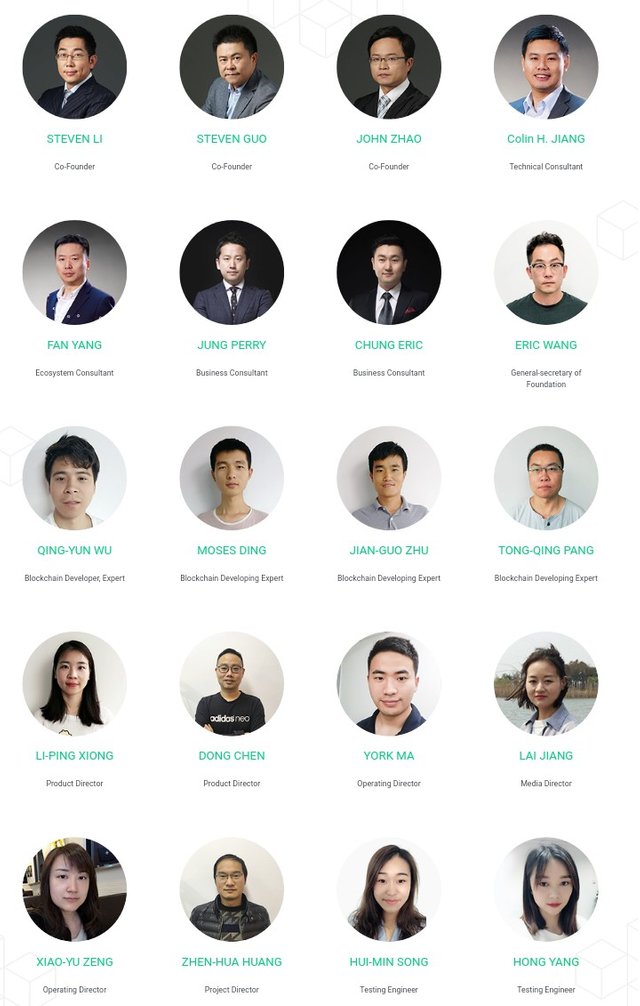
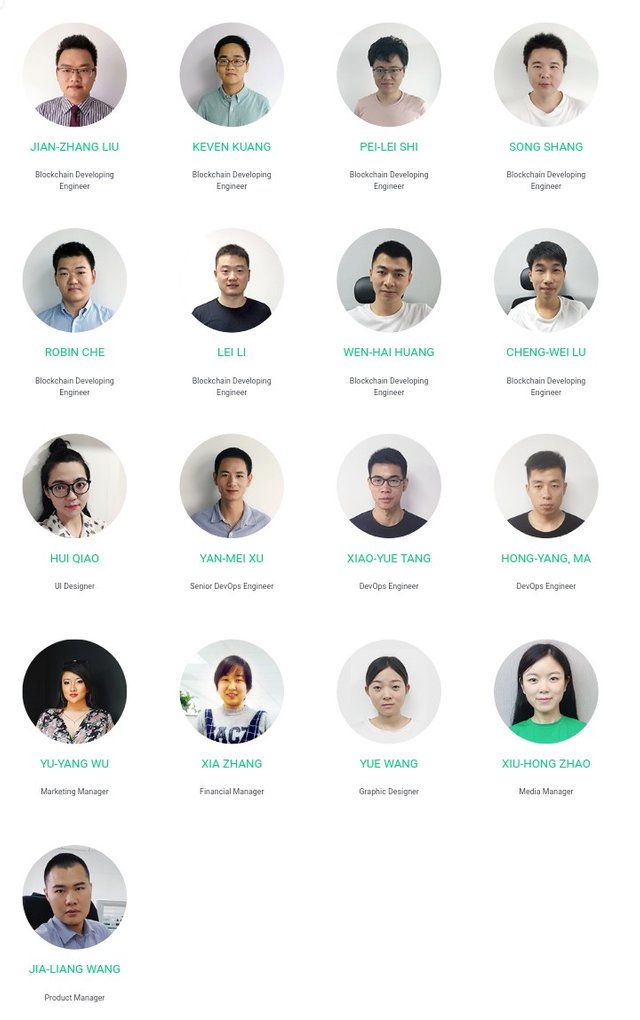
Bumo Partnerships & Investors
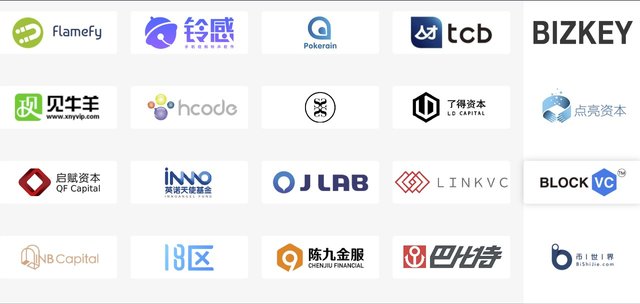

More Information & Resources
- BUMO Website
- BUMO WhitePaper
- BUMO TechnicalPaper
- BUMO Telegram
- BUMO Weibo
- BUMO Reddit
- BUMO Facebook
- BUMO Twitter
- BUMO Github
- BUMO Wallet
- BUMO Originalworks
ALL images are credited to Bumo unless otherwise stated
Tweet Link
bumotwitter
bumo2018
Very well written my friend @ccd000. Looks great project to me.
Good luck for the contest.
Thanks my man! 🤗
I hope they like it.
Meanwhile how's the feedback going on your NOIA review @flash07
They will like it for sure my friend.
Going good my friend. By the way waiting for your answer there regarding testnet. Please reply when you will get time.
Thanks.
This post has been submitted for the @OriginalWorks Sponsored Writing Contest!
There is also a bonus CateredContent Event to earn additional Steem!
You can also follow @contestbot to be notified of future contests!
Congratulations @ced000! You have completed the following achievement on the Steem blockchain and have been rewarded with new badge(s) :
Click on the badge to view your Board of Honor.
If you no longer want to receive notifications, reply to this comment with the word
STOPDo not miss the last post from @steemitboard: